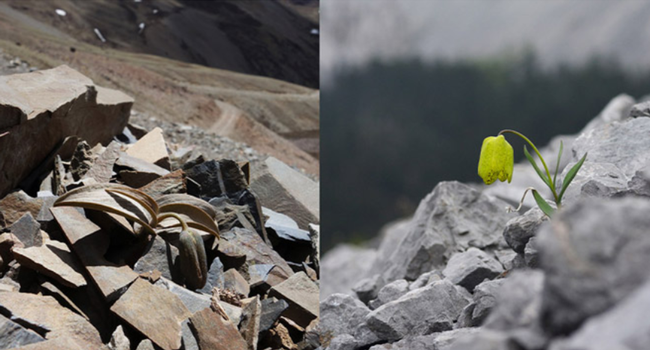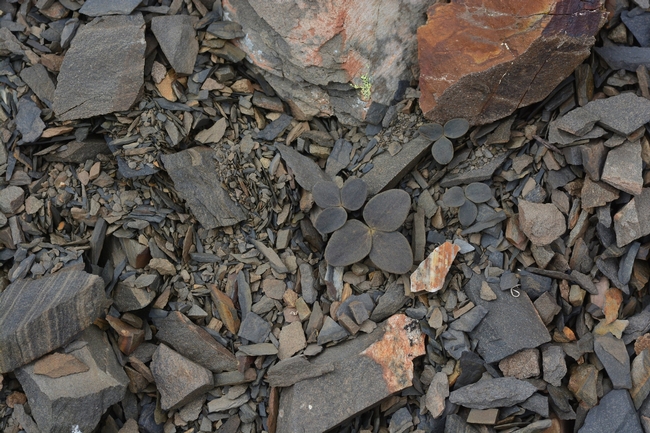What do Fritillaria devlavayi plants and chameleons have in common? Think evolution and ensuring their survival for years to come. If you thought about their ability to camouflage themselves, you're right!
Plants have a will to live similar to humans and other animals. Besides changing colors, some plants have changed their shapes and patterns over many thousands of years to blend in with their environments. What is a newly discovered twist is that researchers in China determined that humans have also influenced the camouflaging of plants. Yang Niu, Martin Stevens, and Hang Sun published a paper in Current Biology on this topic. 
Why? Fritillaria made this adaptation to protect it from extinction by “hunters” whose goal was to harvest it. Rocky areas are more porous and loose, lending themselves to easier plant collection. Fritillaria has no known natural enemies leading researchers to surmise that human harvesting resulted in the camouflaging adaptation.
Photo credit for all pictures: Yang Niu.
Can you find the Corydalis hemidicentra?
This isn't an outrageous claim at all. Humans are known to have exerted strong selection pressure on some animal traits, resulting in unintentional evolutionary changes. Examples include bighorn sheep having smaller horns than they used to, keeping trophy hunters at bay allowing the bighorn sheep to survive. In other research, a group of UC Santa Barbara scientists led by Dr. Scott Hodges, an ecology professor, hypothesized that columbine flower color has evolved in North America as a survival mechanism. While red columbines are pollinated by hummingbirds, white and yellow ones are pollinated by hawkmoths. Over time, this color change occurred five times. In this mutually beneficial arrangement, flora and fauna both stand to gain! Score one for natural selection. See if you can spot the hidden plant (Corydalis hemidicentra).
The next time you're out in nature take a close look around you. You may see something you never noticed before in your own neighborhood or gain a fresh perspective on the wonders of plants and nature.
